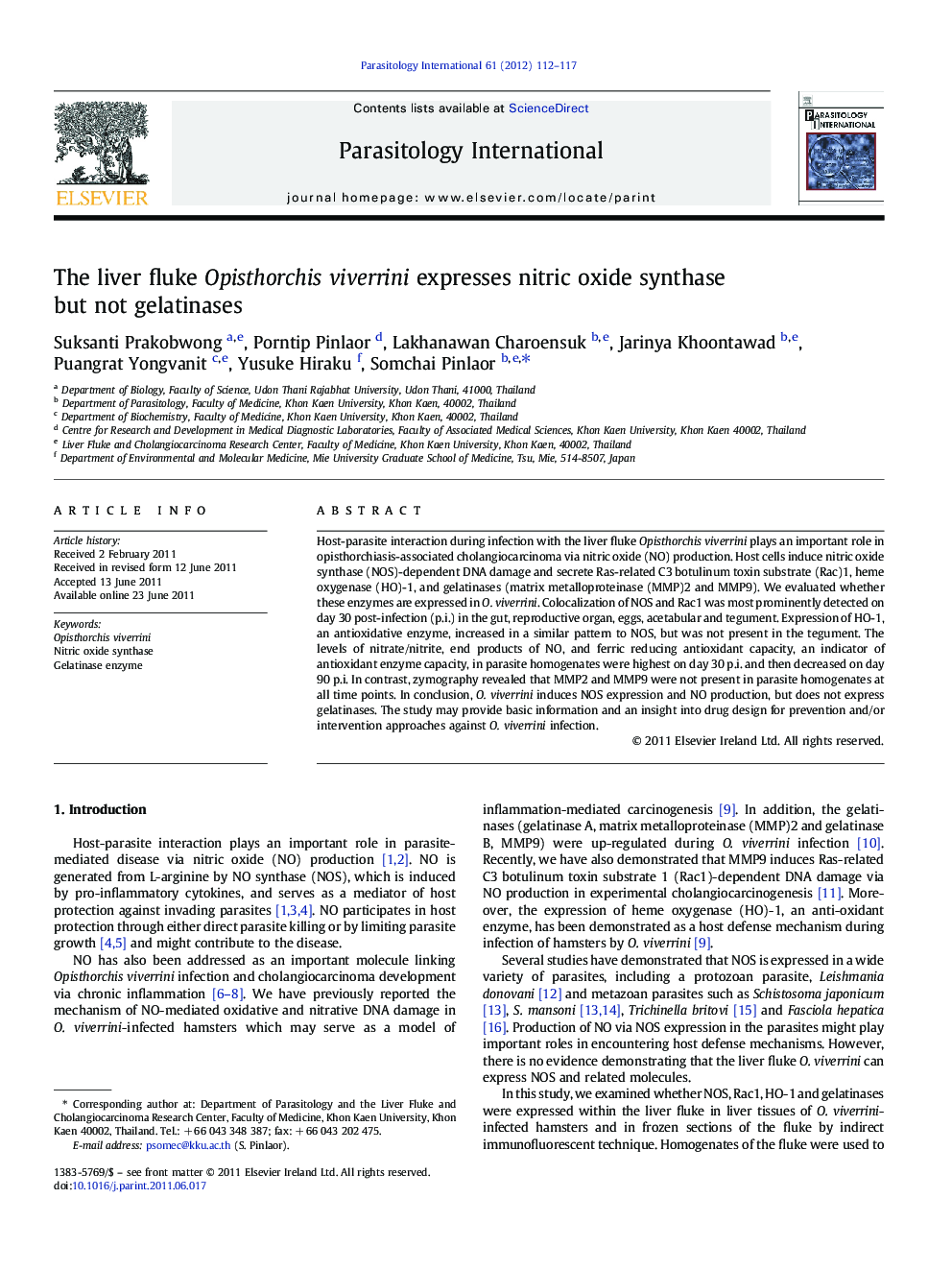| Article ID | Journal | Published Year | Pages | File Type |
|---|---|---|---|---|
| 3417926 | Parasitology International | 2012 | 6 Pages |
Host-parasite interaction during infection with the liver fluke Opisthorchis viverrini plays an important role in opisthorchiasis-associated cholangiocarcinoma via nitric oxide (NO) production. Host cells induce nitric oxide synthase (NOS)-dependent DNA damage and secrete Ras-related C3 botulinum toxin substrate (Rac)1, heme oxygenase (HO)-1, and gelatinases (matrix metalloproteinase (MMP)2 and MMP9). We evaluated whether these enzymes are expressed in O. viverrini. Colocalization of NOS and Rac1 was most prominently detected on day 30 post-infection (p.i.) in the gut, reproductive organ, eggs, acetabular and tegument. Expression of HO-1, an antioxidative enzyme, increased in a similar pattern to NOS, but was not present in the tegument. The levels of nitrate/nitrite, end products of NO, and ferric reducing antioxidant capacity, an indicator of antioxidant enzyme capacity, in parasite homogenates were highest on day 30 p.i. and then decreased on day 90 p.i. In contrast, zymography revealed that MMP2 and MMP9 were not present in parasite homogenates at all time points. In conclusion, O. viverrini induces NOS expression and NO production, but does not express gelatinases. The study may provide basic information and an insight into drug design for prevention and/or intervention approaches against O. viverrini infection.
Graphical abstractFigure optionsDownload full-size imageDownload as PowerPoint slideResearch highlights► O. viverrini infection induces cholangiocarcinoma via host-parasite interaction. ► Host cells induce nitric oxide synthase (NOS), heme oxygenase (HO)-1 and gelatinases. ► In contrast, O. viverrini expresses NOS and HO-1 but not gelatinases. ► NOS and HO-1 may serve as targets for prevention of parasite-induced diseases.
